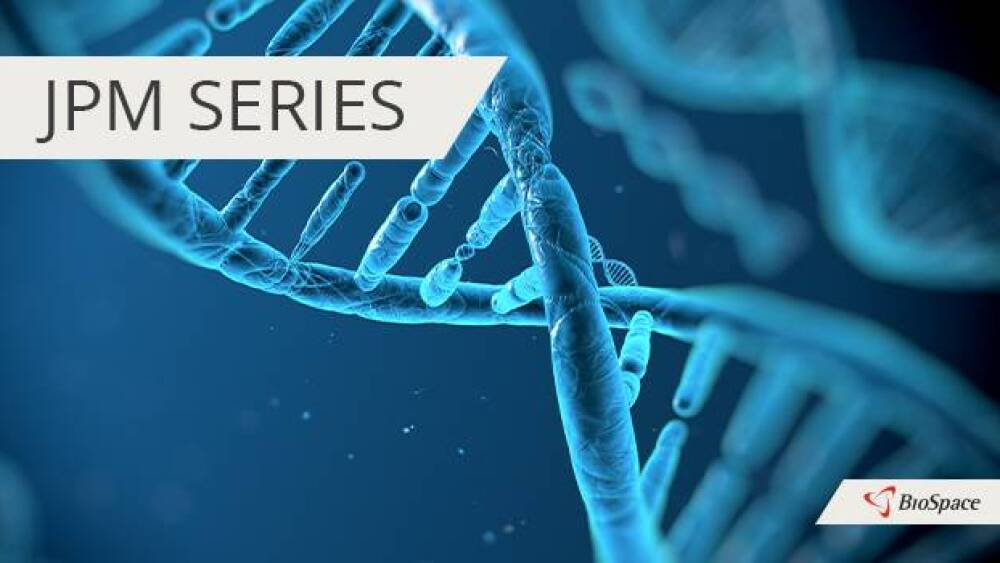Unlike antibody-drug conjugates (ADCs) that focus on antigens, PDCs are able to target the tumor microenvironment that has universal features across solid tumors.
Despite all of the advances made in treating different cancers over the past several years, there is still significant room for improvement in oncology.
That’s the thinking of the leadership team at Connecticut-based Cybrexa Therapeutics who touted the potential of their novel class of tumor-targeting peptide drug conjugate (PDC) therapeutics at the annual J.P. Morgan Health Care Conference. Cybrexa Chief Executive Officer Per Hellsund told BioSpace that the company’s alphalex technology platform is designed to boost the target opportunity within cancer treatment programs.
Hellsund described the company’s approach as a way to “improve the therapeutic index.” Unlike antibody-drug conjugates (ADCs) that focus on antigens, PDCs are able to target the tumor microenvironment that has universal features across solid tumors.
“It provides opportunities for broad targets,” Hellsund said. “We plan to disrupt the ADC market by expanding the reach of the molecules being targeted. We can take payloads that have been proven by ADCs and expand them into new patient populations.”
The company’s lead asset is CBX-12 (alphalex-exatecan), which is in Phase I development as a potential treatment for solid tumors. CBX-12 is an alphalex conjugate that includes the highly potent topoisomerase I inhibitor exatecan. The inhibitor is in the same class as payloads used by two well-known and approved ADCs, AstraZeneca’s Enhertu and Gilead Sciences’ Trodelvy. Hellsund explained that unlike the ADCs, CBX-12 is able to target cancer cells independently of the overexpression of antigens that the ADCs target. The company believes CBX-12 has potential synergy with PD-1 inhibitors and other immuno-oncology drugs.
In October, the company released interim data for the study that showed “robust efficacy signals and tolerability” in patients who have been diagnosed with metastatic cancer. So far, the data seen from the early study is serving as a key demonstration of the company’s alphalex technology, an antigen-independent PDC tumor-targeting platform, Hellsund said.
In data released so far, one patient with ovarian cancer demonstrated a complete response to CBX-12. There has also been a partial response in one patient, and another heavily pretreated patient has achieved stable disease.
“There’s a real belief that this technology can help patients,” Hellsund said. “The clinical benefits we’ve seen, including complete response and low incidence of serious adverse effects related to CBX-12, reinforce our belief that CBX-12 could dramatically change the lives of patients who have few or no therapeutic options.”
Cybrexa has plans to investigate CBX-12 in different solid tumors, including breast, ovarian and non-small cell lung cancer. The company is on track to accelerate the development of CBX-12 and is eying multiple Phase II studies that are expected to be initiated in the second half of 2022.
“So far the data looks very promising,” Hellsund said of CBX12. “We’re very happy with what we’re seeing with proof of mechanism to date. We’re really excited about this platform and the potential to help patients.”
The Phase I study is expected to be completed later this year. Data garnered from the study will ultimately guide the future plans at Cybrexa, Hellsund noted. He added that the data generated in the study will also go a long way to validate the targeting mechanism of action of the PDC platform.
“If we can get the drug into the tumor and spare the tissue, we know it will work,” he said.
Unlike several large trials over the past two years, Hellsund said their clinical program has not been negatively impacted by COVID-19. He admits the company has been fortunate that its program has not been delayed and said he hopes that good fortune will continue as the company begins to position its two other assets, CBX15 and CBX13, for the clinic.
Coinciding with the advancement of Cybrexa’s platform is a need for additional fundraising. Chief Financial Officer Stephen Basso said the $25 million raised last year in a Series B financing round provided the company with enough funding to support operations through the end of this year. Basso said they anticipate securing additional funding that will support the launch of expansion cohorts for CBX-12 and begin clinical trials for the company’s other top candidates. Basso said they are looking at a crossover financing round of $75 million that will finance the company for another two years. He hinted that this will allow the company to broaden its investor based and eventually position it for a possible initial public offering.
The J.P. Morgan conference typically brings companies face-to-face with multiple investors. While that mode is usually preferable for both investor meetings and potential partnering opportunities, Basso and Hellsund said they are being proactive with their time setting up the necessary meetings to share the Cybrexa story.
“Our objectives are to meet new investors and we are always looking to maintain relationships with bankers and strategic partners,” Hellsund said. He added that the company is excited to share information about its technology and the possible disruption of the ADC market the company envisions.






